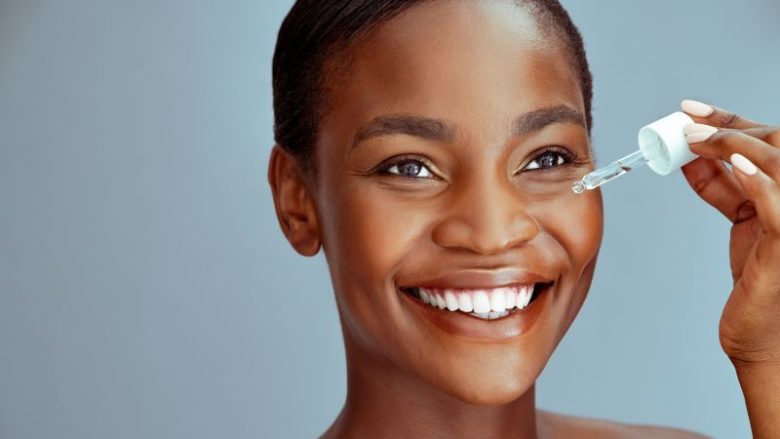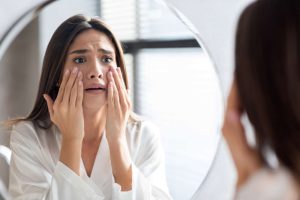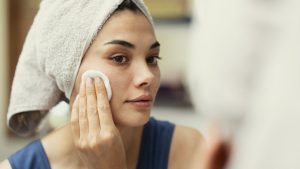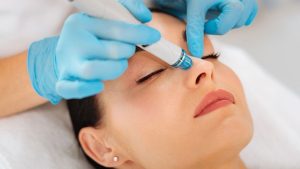There is no more effective skincare ingredient than retinol, and no other ingredient has ever assumed the role of. Apart from distinguishing itself in transforming skin appearance, retinol, which is derived from vitamin A, plays anti-ageing, acne, and overall skin rejuvenation roles incredibly well. For decades, it has been extensively provided for in dermatological clinic prescriptions, creams, serums, and other stronger formulations. Regular application of retinol reduces fine lines, improves skin texture, and gives a youthful glow.
Retinol and the Skin Renewal Cycle
The most important benefit of retinol is that it accelerates cell turnover, a crucial step in skin rejuvenation. Skin renewal processes tend to slow down due to ageing, which can result in having uneven skin tone and fine lines. Retinol helps with that by getting rid of dead skin cells and stimulating the production of new ones. With consistent use, not only does retinol work wonders on skin texture, but it also provides a youthful vibrancy and renewed glow.
Minimizing Fine Lines and Aging Wrinkles
Although aging is inevitable, there are several external factors such as sun exposure, pollution, and lifestyle choices that can accelerate fine lines and wrinkles. Retinol is one of the best ingredients to combat aging wrinkles because of collagen stimulation. Collagen is the protein responsible for skin firmness and elastic. Retinol increasing collagen levels helps in smoothing out the fine lines, reduces the depth of wrinkles, and aids in preventing new ones from forming. With the continued use of retinol over time, skin becomes firmer, more resilient.
Acne Treatment and Prevention of Breakouts
Retinol is also highly effective in treating acne and preventing breakouts. It works to unclog the pores, lessen excess oil production, and stop bacteria buildup that leads to pimples. Retinol helps fade acne scars and reduces inflammation while accelerating skin cell turnover. Heavily recommended for the acne, blackhead, and whitehead sufferers. Initial use of retinol often causes purging, aka, breakouts getting worse before getting better, but eventually results in healthier skin.
Evening Out Skin Tone
Skin can look old and lacklustre with hyperpigmentation, dark spots, and uneven skin tone. Retinol is helpful in fading out dark spots caused due to sun exposure, acne scars, and hormonal changes. With consistent use, retinol brightens the complexion and encourages the sloughing off of pigmented skin cells, thus giving rise to an even skin tone. Retinol can greatly enhance the skin’s clarity and radiance, regardless of whether one is dealing with melasma, sun spots, or post-inflammatory hyperpigmentation.
Shrinking Pores and Improving Skin Texture
As a result of enlarged pores and breakouts, the skin frequently appears rough and inconsistent. Retinol reduces the visibility of pores by enhancing the elasticity of the skin, which stops oil from accumulating. Further cell rejuvenation and collagen production lead to tighter skin, which helps the pores become less visible. Over time, this transforms the skin’s texture, leaving it softer and more supple, which improves the skin’s overall appearance.
Improving Skin Moisture Retention
Firstly, retinol performs wonders for the skin but can result in skin dryness and irritation when first starting to use it. Thus, choosing the right formulation to use with it can make a difference. Using a gentle moisturizer after applying retinol helps prevent moisture loss and helps ensure the skin remains soft to touch. Users with sensitive skin can lower the concentration and gradually increase it to help the skin get used to it without Now, how does one go about using retinol? For the best and most effective results, retinol has to be used alongside patience and dedication.
How to Incorporate Retinol
Only a low concentration of retinol should be used for the first week and then the frequency can be increased gradually. Because retinol increases sensitivity to sunlight, it is best used at night. It is important to combine retinol with a sunscreen when going outdoors to give maximum protection against skin damage and heat. Retinol should also not be combined in a skincare routine with strong exfoliating products for the ache so as to avoid skin irritation. There should be a guided approach when it comes to building skin tolerance, gradually increasing the amount of times it is used in order to give well-planned results.
The Need for Sunscreen while Using Retinol
Incorporating sunscreen as part of your daily regimen is important, especially for those who use retinol because it makes the skin vulnerable. Without protection, sun exposure may cause redness, irritation, and problems in hyperpigmentation areas. A broad-spectrum SPF of at least 30 should be used every morning, even on cloudy days. Excessive retinol exposure puts scratches on the skin’s surface, and excess inflammation adds harm. Retinol is enhanced with sunscreen usage as it prevents the advances of premature ageing and sun spots. Healthy skin can be achieved by the combination of retinol at night with sunscreen during the daytime.
Retinol for All Skin Types
People often wonder how retinol works for all skin types. Users should take into consideration their personal skin-related issues. Individuals with oily skin and acne generally should use stronger retinol since they will benefit from it. On the other hand, people suffering from dry and sensitive skin should tend to the retinol with the lowest strength in a starter pack. For people who are prone to too much irritation, they can use other types of retinol, such as retinaldehyde or bakuchiol. People with every skin type should pay attention to how their skin performs and increase retinol capacity step by step for best effectiveness.
Conclusion
Retinol is a vital component for the skin’s rapid transformation in terms of dealing with the signs of ageing, adjusting the skin texture, and reducing acne. It is essential for collagen production, refining pores, and evening out the complexion, making it an indisputable must-have in every skincare routine. While patience and a gentle application are required, the benefits in the long run outweigh the cons. With the right approach and by using adequate moisturisers, alongside regular sunscreen application, smoother, younger-looking, and brighter skin is achievable.
FAQs
1. How long does it take for retinol to show results?
Results vary, but skin tone and texture generally improve for a majority of users over a span of four to eight weeks. However, the anti-ageing features like wrinkle reduction require months before noticeable results are seen.
2. Can I use retinol nightly?
It’s recommended that beginners limit retinol use to a few times a week and increase frequency from there. After sufficient tolerance is built in the skin, daily use is entirely possible.
3. Does retinol lead to peeling and irritation?
Redness, dryness, and skin peeling are common when starting retinol and are expected. To reduce the irritation, a moisturiser paired with lower-concentration retinol is recommended.
4. Can retinol be combined with vitamin C?
Both retinol and vitamin C contain active ingredients but are recommended to be used separately for optimal results. Vitamin C works nicely during the day and should be put on in the morning, while retinol should be used at night.
5. Are prescription retinols more potent than those bought without a prescription?
Yes. Prescription retinoids, such as tretinoin, are stronger and faster in terms of their effectiveness when compared to retinol bought without a prescription. They tend to cause more irritation, so a dermatologist’s supervision is needed.




